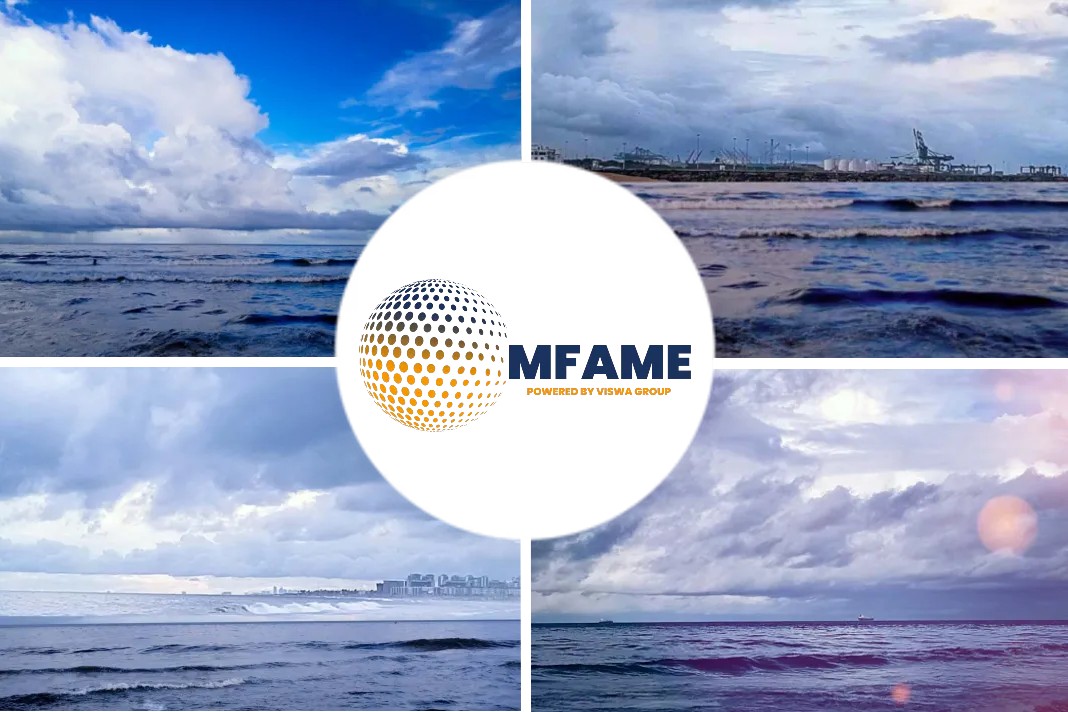Recently, I had the opportunity to visit Military Sealift Command Training Center Hampton Roads, located on Joint Base Langley-Fort Eustis. MSC’s Training Centers are responsible for providing both required Basic Training for MSC’s newly hired Civil Service Mariners (CIVMAR) as well as advanced and requalification training for CIVMARs, contracted mariners and Navy Reservists already serving in MSC’s fleet, says a story published by Bill Mesta in DVIDS Hub.
Training opportunity
This article is the second, in a series, focused on the training opportunities offered at the MSC’s Training Centers.
While I was at the training center I had the opportunity to visit the MSC Damage Control Trainer, which is where newly hired and veteran Civil Service Mariners (CIVMAR) receive hand-on damage control training.
Damage control
Damage control aboard MSC’s ships involves a crew’s ability to manage at-sea threats and emergencies which could cause a ship to sink or become inoperable; such as fires, flooding or structural failing. All newly hired and veteran CIVMARs are required to be damage control qualified to sail aboard any of MSC’s ships.
It is critical for MSC’s CIVMARs to be skilled in damage control because a ship at-sea relies on its crew to address emergencies when they arise.
“To put it simply… there’s no “911” at-sea,” according to Michael McVaney, Firefighting Team Leader at MSC Training Center Hampton Roads. “So for emergencies on ships, the crew can’t just make a phone call, find a safe place to hide and wait to be rescued. Instead, Mariners are called upon, at any time, to assume the role of emergency first responders.”
“When underway, the solution to most shipboard emergencies must come from within,” he added. “So each vessel needs the proper damage control equipment and personnel who are knowledgeable and skilled to respond to whatever emergency happens.”
Classroom and practical training
Both MSC Training Center Hampton Roads and MSC Training Center West, in San Diego, provide classroom and practical damage control training for the community’s CIVMARs.
“MSC’s damage control training, address a range of issues such as flooding and structural damage from a variety of courses which includes focus on collisions, battle damage and ruptured piping,” said McVaney. “The students practice shoring, plugging and patching to slow down the water and shoring to strengthen weakened structures within a vessel.”
“There is also a ‘de-watering’ portion of the damage control training,” he added. “We train the students in the use of equipment and systems used to remove flood water from the ship.”
Students also learn how to use the different types of equipment used to fight shipboard fires, remove smoke and toxic fumes and perform temporary structural repairs.
Focus on the immediate goal
“While the term damage control” can relate to a variety of issues, such as fire, flooding, chemical, biological and radiological damage, our damage control trainer and the class we offer focuses mainly on responding to physical damage to a vessel,” McVaney stated. “From the start, we impress upon the students that our immediate goal (during an at-sea emergency) is control… not repair.”
“We’re not looking to make things ‘good as new,’ but rather ‘good enough to survive,’ so the ship can continue on its voyage or mission,” he added. “At the very least, effective damage control efforts will buy the ship and its crew time to continue working the problem.”
Simulated emergencies
The MSC Damage Control Trainer provides realistic simulated emergencies in a controlled environments designed to feel like the actual spaces CIVMARs encounter aboard MSC’s ships. Some of the situations simulated at the training center include extinguishing a trashcan fire, putting out a fire in a stateroom and handling an enginroom fire.
“The highlight of the Damage Control Class is the Damage Control Tank or ‘Wet Trainer’,” according to McVaney. “This simulates interior compartments of a vessel with different types of physical damage and water intrusion. There are hatches that can’t be closed, cracks and holes in the bulkheads and even some piping that leaks.”
CIVMARs who currently sail in MSC’s fleet are required to re-qualify in damage control every five years.
CIVMARs Interest
“The hands-on type of training we provide helps to reinforce the classroom presentations, so come here ready to get involved in the process,” McVaney advised. “Oh yeah… bring a towel and a change of clothes because you’re gonna’ get wet.”
McVaney concluded by suggesting that CIVMARs interested in exploring MSC damage control training opportunities should contact their Marine Placement and Training Specialists.
Did you subscribe to our daily Newsletter?
It’s Free! Click here to Subscribe
Source: DVIDS Hub



















